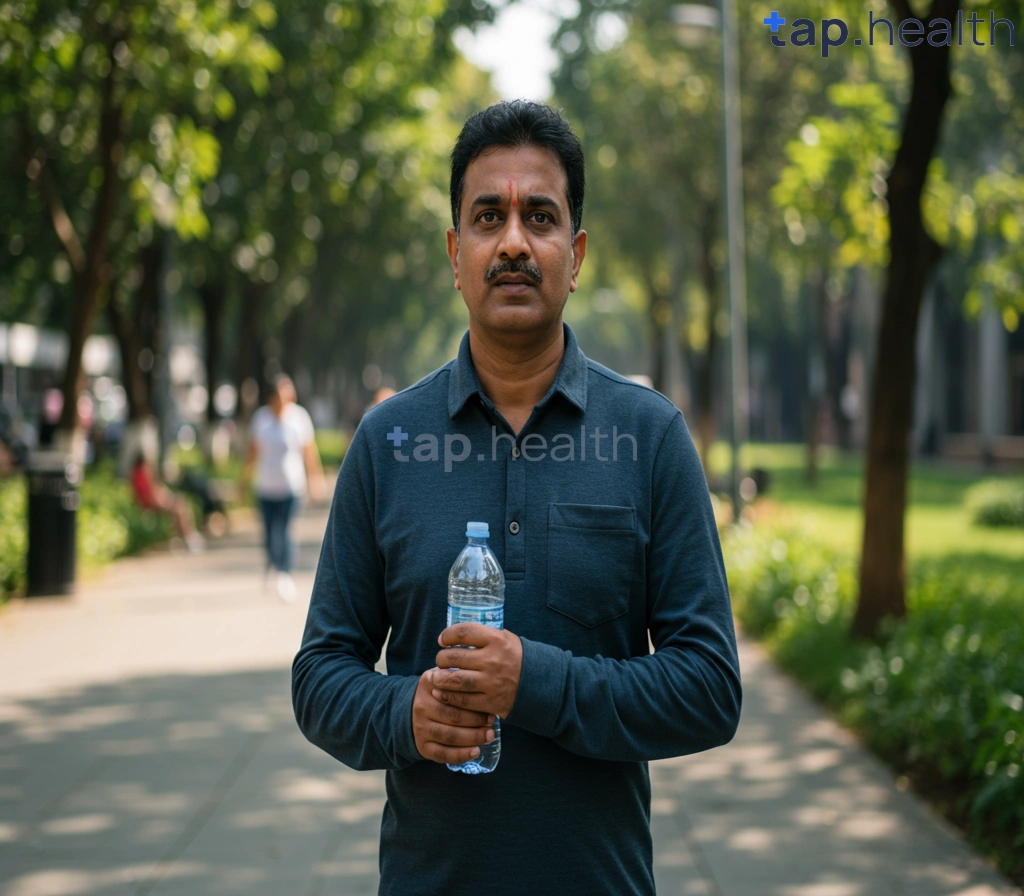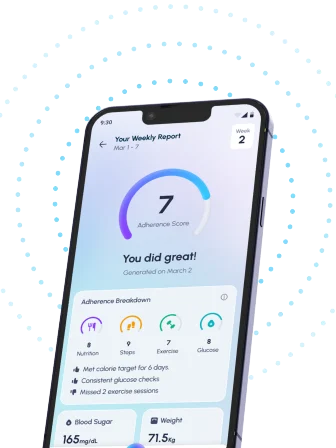Table of Contents
- DASH Diet Meal Plan: Diabetes-Friendly Servings
- Understanding DASH Diet Servings for Blood Sugar Control
- Recommended DASH Diet Foods: A Diabetes Guide to Portion Sizes
- Is the DASH Diet Right for You? A Diabetes Perspective
- Create Your DASH Diet Plate: Visual Guide to Servings
- Frequently Asked Questions
- References
Living with diabetes can feel overwhelming, but managing your blood sugar doesn’t have to be a constant struggle. One powerful tool in your arsenal is the DASH Diet, and understanding its recommended servings is key to success. This complete guide, “DASH Diet for Diabetes: A Complete Guide to Recommended Servings,” will equip you with the knowledge and practical strategies to implement this effective eating plan. We’ll break down exactly what the DASH Diet entails, providing clear explanations of portion sizes and offering delicious, diabetes-friendly recipe ideas. Ready to take control of your health and well-being? Let’s dive in!
DASH Diet Meal Plan: Diabetes-Friendly Servings
Understanding Carb Counts for Diabetes Management in Tropical Climates
Managing diabetes effectively in hot, humid climates like those found in many Indian and tropical countries requires careful consideration of your diet. The DASH diet, known for its emphasis on fruits, vegetables, and whole grains, is a popular choice, but portion control is crucial. Generally, 45–60 grams of carbs per meal is a suggested guideline for many individuals with diabetes, although individual needs vary. This range is a starting point and should be adjusted based on your blood sugar levels, activity level, and other individual factors. Consulting a doctor or registered dietitian is vital for personalized recommendations. For more information on managing blood pressure alongside diabetes, see our article on The DASH Diet for Controlling Blood Pressure.
Sample DASH Diet Meal Plan for Diabetes (Indian/Tropical Adaptations)
Consider incorporating locally sourced, seasonal produce. For breakfast, a small portion of idli or dosa (South Indian rice cakes) with a side of vegetables and a small amount of chutney can offer a balanced start. Lunch might feature moong dal cheela (lentil pancakes) with a generous serving of mixed vegetables. Dinner could be a hearty lentil soup with brown rice and a side salad featuring tropical fruits like papaya or mango (in moderation due to sugar content). Remember to always prioritize whole grains over refined carbohydrates and choose lean protein sources like fish, lentils, and beans.
Region-Specific Considerations
The abundance of fresh fruits and vegetables in tropical regions offers many delicious and nutritious options for incorporating into a DASH diet. Remember to pay attention to portion sizes, especially when consuming naturally sweet fruits. Stay hydrated, particularly in warmer climates, as dehydration can affect blood sugar levels. Consult with your healthcare provider or a registered dietitian to create a personalized DASH diet plan that considers your specific needs and local food availability for effective diabetes management. For a more comprehensive guide to diabetic diets, check out our Diet Chart for Diabetic Patients to Control Diabetes.
Understanding DASH Diet Servings for Blood Sugar Control
Maintaining healthy blood sugar levels is crucial for managing diabetes, especially in tropical and Indian climates where dietary habits can significantly impact blood glucose control. The DASH (Dietary Approaches to Stop Hypertension) diet, with its emphasis on fruits, vegetables, and whole grains, offers a powerful strategy for achieving this. Remember, ideal pre-meal blood sugar levels should be between 80–130 mg/dL, and post-meal levels should be less than 180 mg/dL. Sticking to recommended DASH servings helps you stay within this range. Understanding what constitutes a “normal blood sugar level after eating” Normal Blood Sugar Level After Eating: Facts & Tips is also important for managing your diet effectively.
Understanding Portion Sizes in the DASH Diet
The DASH diet isn’t just about eating healthy foods; it’s about eating the *right amounts*. For example, the recommended daily servings include 4-5 servings of fruits and vegetables, rich in fiber which helps regulate blood sugar. Think of a medium-sized apple or a cup of chopped vegetables as a single serving. Incorporating locally available fruits like mangoes (in moderation) and papayas, and vegetables like okra and bitter gourd, common in Indian and tropical cuisines, can make the DASH diet more palatable and culturally relevant. Also, remember to choose whole grains like brown rice and millets over refined grains.
Adapting DASH to Indian and Tropical Diets
Adapting the DASH diet to your specific region is key to long-term success. Spices commonly used in Indian and tropical cooking, like turmeric and ginger, can also contribute to overall health. However, be mindful of added sugars and fats often found in traditional dishes. Prioritize lean protein sources like lentils, beans, and fish, and limit red meat consumption. Remember that portion control remains vital. By carefully measuring servings and making conscious food choices, you can effectively manage your blood sugar levels and enjoy the benefits of the DASH diet within your cultural context. Consult with a doctor or registered dietitian for personalized guidance tailored to your specific needs and preferences. Maintaining healthy blood sugar levels is a journey, and learning how to maintain healthy blood sugar levels is crucial for long-term well-being.
Recommended DASH Diet Foods: A Diabetes Guide to Portion Sizes
Managing blood sugar levels is crucial, especially in regions like India and other tropical countries where diabetes prevalence is high. Remember, a blood glucose level of less than 140 mg/dL is considered normal, while 140–199 mg/dL indicates prediabetes, and 200 mg/dL or higher suggests diabetes. The DASH (Dietary Approaches to Stop Hypertension) diet can be a powerful tool in this regard. It emphasizes fruits, vegetables, whole grains, and lean protein, all vital for stable blood sugar and overall health.
Understanding Portion Sizes within the DASH Diet
The key to successful DASH dieting lies in mindful portion control. For example, instead of a large plate of rice, opt for a smaller serving, perhaps substituting half with quinoa or brown rice for increased fiber. Similarly, instead of a large serving of chapati, consider two smaller ones. Incorporate a variety of colorful vegetables – think spinach, okra, and bottle gourd, common and readily available in many Indian and tropical markets – aiming for at least 2-3 cups daily. These provide essential nutrients and fiber, which aid in blood sugar regulation.
Protein and Healthy Fats
Lean protein sources such as lentils (dal), chickpeas (chana), fish, and chicken should be included in moderate portions. Healthy fats, like those found in nuts (a small handful), avocados (half), and olive oil (a tablespoon or two), are also important for satiety and overall well-being. Remember to limit saturated and trans fats found in processed foods and fried dishes.
Practical Tips for Indian & Tropical Regions
Prioritize locally sourced fruits and vegetables rich in antioxidants and fiber. Prepare meals at home more often to control portion sizes and ingredients. For more ideas on specific foods to include, check out this list of 20 Best Foods for People with Diabetes. Seek advice from a registered dietitian or healthcare professional to create a personalized DASH meal plan tailored to your specific needs and preferences, considering regional dietary habits. If you’re prediabetic, learn more about preventing diabetes with a Pre Diabetic Diet Chart. Taking these steps can significantly improve your blood sugar control and overall health.
Is the DASH Diet Right for You? A Diabetes Perspective
Managing diabetes, especially in the context of diverse Indian and tropical diets, requires a mindful approach to nutrition. The DASH (Dietary Approaches to Stop Hypertension) diet, while originally designed to lower blood pressure, offers significant benefits for people with diabetes across all age groups. Statistics show that a substantial portion of the diabetic population – 61% are aged between 20-64 years, while 39% are 65+ years (Source) – could significantly improve their health by incorporating its principles. This highlights the broad applicability of DASH, regardless of age.
Understanding the DASH Diet’s Relevance to Diabetes
The DASH diet emphasizes fruits, vegetables, whole grains, and lean protein, all crucial for stable blood sugar levels. For individuals in India and tropical countries, this translates to incorporating readily available options like lentils, various vegetables, and locally sourced fruits. Reducing sodium intake, a key component of DASH, is particularly vital in these regions where high-sodium diets are prevalent. This is critical for managing hypertension, a common complication of diabetes. Choosing the right balance of carbohydrates is also important, and you might find our article on Low-Carb vs. Moderate-Carb Diets for Diabetes: What Works Best? helpful in understanding this aspect.
Adapting DASH to Your Lifestyle
Successfully implementing the DASH diet requires mindful substitutions. For instance, swapping refined grains for whole grains (like brown rice or millets), choosing lean proteins like fish or chicken, and limiting sugary drinks and processed foods are essential steps. Remember, the DASH diet isn’t a strict regimen; it’s about making gradual, sustainable changes to your eating habits. Consider consulting a doctor or registered dietitian to tailor a DASH plan specifically to your needs and preferences, considering the unique availability of ingredients in your region. Weight management is often a goal alongside diabetes management, and you may find our guide on How to Lose Weight with Diabetes Diet Plan beneficial.
Taking Action: A Personalized Approach
Start small. Focus on increasing your daily fruit and vegetable intake, gradually reducing processed food consumption, and making conscious choices about your protein sources. Remember, consistent effort is key. A tailored DASH diet plan, adapted to the readily available foods in Indian and tropical regions, can significantly contribute to your long-term health and diabetes management. Consult a healthcare professional to create a personalized plan that works best for you.
Create Your DASH Diet Plate: Visual Guide to Servings
Understanding Your DASH Diet Plate
The DASH (Dietary Approaches to Stop Hypertension) diet is highly recommended for managing diabetes, especially prevalent in India and tropical countries. Remember, daily consumption of sugary beverages raises diabetes risk by 26%, emphasizing the importance of a healthy diet. To visualize your daily DASH plate, imagine dividing it into sections:
Fruits and Vegetables: Half Your Plate
Fill half your plate with a colorful variety of fruits and vegetables. This includes locally available options like mangoes, papayas, spinach, okra, and various other seasonal produce abundant in Indian and tropical regions. Aim for at least 4-5 servings daily.
Whole Grains: One-Quarter of Your Plate
Dedicate one-quarter of your plate to whole grains such as brown rice, quinoa, millets (like ragi and jowar, staples in Indian cuisine), and whole-wheat roti or chapatis. These are excellent sources of fiber, helping regulate blood sugar levels.
Lean Protein: The Remaining Quarter
The remaining quarter should consist of lean protein sources. This could include lentils (dal), chickpeas (chana), fish, poultry without skin, or tofu, all readily accessible and culturally relevant in many parts of India and tropical regions.
Healthy Fats and Dairy
Remember to incorporate healthy fats like nuts and seeds (almonds, cashews, flax seeds) in moderation, and choose low-fat dairy products like yogurt or skimmed milk. A balanced approach, tailored to your local produce, is key to effective diabetes management with the DASH diet. For more tips on managing your diet, check out How to Start a Diet Plan and Stick to It: Simple & Effective Tips.
Actionable Steps for Success
Start small, gradually incorporate DASH principles into your existing diet, and consult a healthcare professional or registered dietitian for personalized guidance tailored to your specific needs and local dietary preferences. Prioritizing a DASH diet can significantly improve your health outcomes and reduce your diabetes risk. Managing cholesterol is also vital, and you can learn more about that with How to Control Cholesterol with Diet Chart: Simple & Effective Tips.
Frequently Asked Questions on DASH Diet for Diabetes
Q1. What is the DASH diet and how can it help manage diabetes?
The DASH diet is a dietary approach focusing on fruits, vegetables, whole grains, and lean protein. It’s beneficial for managing diabetes by helping to control blood sugar levels. It emphasizes portion control and mindful food choices.
Q2. What are some examples of meals I can eat on the DASH diet, keeping in mind an Indian context?
The DASH diet can easily incorporate Indian staples. Think idli, dosa, moong dal cheela, lentil soup with brown rice, and other similar dishes made with whole grains and lean proteins. Always prioritize portion control, particularly with naturally sweet fruits.
Q3. How many carbohydrates should I consume per meal on the DASH diet?
A typical DASH meal plan suggests 45-60 grams of carbohydrates per meal. However, individual needs vary depending on factors like activity level and overall health. It’s crucial to consult a healthcare professional or registered dietitian to determine your ideal carbohydrate intake.
Q4. What are the potential challenges of following the DASH diet, and how can I overcome them?
Successfully implementing the DASH diet requires consistent effort and mindful substitutions. Challenges may include adapting to portion control and making gradual changes to your eating habits. A registered dietitian or healthcare professional can provide personalized guidance and support to overcome these challenges.
Q5. Is professional guidance necessary when starting the DASH diet?
While you can begin incorporating DASH principles independently, professional guidance is highly recommended. A registered dietitian or healthcare provider can create a personalized plan based on your individual needs and health status, ensuring safe and effective implementation.
References
- A Practical Guide to Integrated Type 2 Diabetes Care: https://www.hse.ie/eng/services/list/2/primarycare/east-coast-diabetes-service/management-of-type-2-diabetes/diabetes-and-pregnancy/icgp-guide-to-integrated-type-2.pdf
- Children with Diabetes : A resourse guide for families and school. : https://www.health.ny.gov/publications/0944.pdf




